Thursday, May 28, 2009
Derrick May in Medellin: Saturday, May 30th
The godfather of house music, live in Medellin, Colombia!
Derrick May, also known as Mayday and Rhythim is Rhythim, is an electronic musician from Belleville, Michigan U.S.A. He was born an only child in Detroit in 1963 and began to explore electronic music early in his life. Along with his Belleville, Michigan high school friends Juan Atkins and Kevin Saunderson, commonly known as the Belleville Three, May is credited with developing the futuristic variation on house music that would be dubbed "techno" by Atkins.
May's career started in 1987 with the release of a record called "Nude Photo" (co-written by Thomas Barnett), which helped kickstart the Detroit techno music scene. A year later he was following it with what was to become one of techno's classic anthems, the seminal track "Strings of Life," which was named by Frankie Knuckles.
May has not released any original solo recordings since 1993, but has also produced numerous remixes and has re-worked his older material for video game and movie soundtracks, including, most recently, music for the new film of the popular combat video game Tekken.
For one year, in 2003, he was given control of Detroit's popular annual electronic music festival, originally conceived by Carl Craig, now operated by Paxahau. He named his event Movement, replacing the Detroit Electronic Music Festival along the city's riverfront.
Derrick May continues to maintain a steady performance schedule, performing again in Medellin, Colombia Saturday May, 30th.
Discover The Transformation of Medellin, Colombia (click here.)
Wednesday, May 27, 2009
Tour & Expeditions in Colombia
Big Five Tours & Expeditions is pleased to announce the launch of its new collection of luxury tours to Colombia, one of South America’s most rapidly emerging destinations.
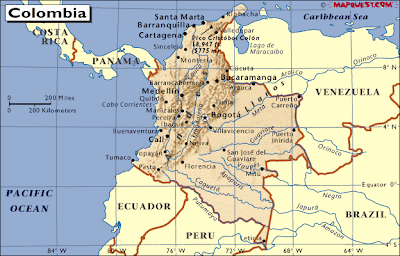
“Colombia is undergoing a renaissance, and now offers a wealth of cultural and historic attractions,” states Ashish Sanghrajka, president of Big Five. “And, some superb boutique hotels
and historic homes have opened their doors. We are delighted to be able to include Colombia tours in our portfolio of destinations.”
Big Five has developed three programs, ranging from eight to 13 days that delve into the country’s rich culture and the traditions around Colombia’s renowned coffee. Colombia was originally inhabited by indigenous people, hunters or nomadic farmers, long before the Spanish arrived in the 16th century. The country’s Spanish colonial legacy is found in the art and architecture of its principal cities such as Bogota, Cartagena, and Medellin. Bogotá has lovely parks and more than 40 museums as well as shopping malls, restaurants and the old historic center of the city, La Canberra. Medellin, founded in 1616, is now a dynamic and growing city known for arts, literature and education, while Cartagena’s historic area of the old Walled City have been declared both Mankind’s Heritage and Colombian National Heritage by UNESCO.
Colombia also has wonderful natural landscapes such as in the area of Pereira, where travelers visit a plantation to learn about the entire process from the seed to the end product – a steaming cup of the finest Colombian coffee. The peaceful Tyrona National Park on the Atlantic Coast offers an ideal escape to quiet beaches and secluded bays, where guests enjoy water sports, nature treks, or simply relaxing. Big Five’s eight-day “Colombia’s Coffee and Culture” starts at $2450 per person, land only, double occupancy, and includes accommodations, most meals, touring and entry fees as per itinerary, and much more.
Discover Colombia
With more than 35 years experience, Big Five Tours & Expeditions is a premier luxury travel and tour company specializing in individualized vacations worldwide; from custom-designed, private vacations to fully-escorted, special-interest groups to destinations that span Africa, South and Central America (including the Galapagos Islands), Asia and The Orient, South Pacific, Antarctica and The Arctic.
Big Five Tours & Expedtions in Colombia

“Colombia is undergoing a renaissance, and now offers a wealth of cultural and historic attractions,” states Ashish Sanghrajka, president of Big Five. “And, some superb boutique hotels
and historic homes have opened their doors. We are delighted to be able to include Colombia tours in our portfolio of destinations.”
Big Five has developed three programs, ranging from eight to 13 days that delve into the country’s rich culture and the traditions around Colombia’s renowned coffee. Colombia was originally inhabited by indigenous people, hunters or nomadic farmers, long before the Spanish arrived in the 16th century. The country’s Spanish colonial legacy is found in the art and architecture of its principal cities such as Bogota, Cartagena, and Medellin. Bogotá has lovely parks and more than 40 museums as well as shopping malls, restaurants and the old historic center of the city, La Canberra. Medellin, founded in 1616, is now a dynamic and growing city known for arts, literature and education, while Cartagena’s historic area of the old Walled City have been declared both Mankind’s Heritage and Colombian National Heritage by UNESCO.
Colombia also has wonderful natural landscapes such as in the area of Pereira, where travelers visit a plantation to learn about the entire process from the seed to the end product – a steaming cup of the finest Colombian coffee. The peaceful Tyrona National Park on the Atlantic Coast offers an ideal escape to quiet beaches and secluded bays, where guests enjoy water sports, nature treks, or simply relaxing. Big Five’s eight-day “Colombia’s Coffee and Culture” starts at $2450 per person, land only, double occupancy, and includes accommodations, most meals, touring and entry fees as per itinerary, and much more.
Discover Colombia
With more than 35 years experience, Big Five Tours & Expeditions is a premier luxury travel and tour company specializing in individualized vacations worldwide; from custom-designed, private vacations to fully-escorted, special-interest groups to destinations that span Africa, South and Central America (including the Galapagos Islands), Asia and The Orient, South Pacific, Antarctica and The Arctic.
Big Five Tours & Expedtions in Colombia
Monday, May 18, 2009
“Expedition Condor” Adventures in Colombia
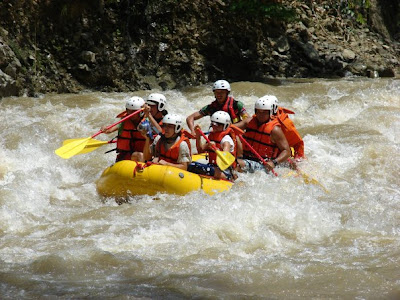
“Expedition Condor” Tours in Medellin, Antioquia - Colombia
A great video from previous tours throughout Colombia
“The Expedition Condor” tours in Colombia is designed to give participants a wide variety of adventurous activities along with a special attention to cultural integration for travelers to learn about the towns they visit along the tour routes.
NEXT EVENT: “Vive tu propia Expedición, Toda una Aventura.....!!"
What: The Expedition Condor Tour Group.
Host: Expedicion Condor de los Andes
Start Time: Saturday, June 20 at 7:30am
End Time: Monday, June 22 at 5:30pm
Location: Medellin, Antioquia.- Colombia
Tour Fee: $360.000. Colombian Pesos
Contact: Juan Felipe Meneses
Email: hastaelimite @ hotmail com
Tour Fee includes: transportation, meals, accommodations, equipment, professional and knowledgeable tour guides.
The tour is limited to the first 20 people who sign up.
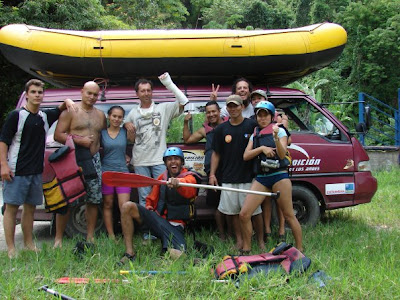
La Expedición Cóndor de los Andes, como preámbulo a lo que será su travesía por 17 departamentos de nuestro país y respondiendo a los múltiples mensajes de las personas que integran nuestro grupo en facebook, a decidido programar esta aventura llena de adrenalina, en la cual podrás vivir al mejor estilo de la expedición, el vértigo y emoción que produce la practica de los deportes extremos.
Tu aventura incluye la práctica de deportes de aventura:
• Parapente
• Rappel
• Rafting
• Bungee
• Torrentismo
- Incluye alimentación:
• Almuerzo y refrigerio y comida del primer día
• Desayuno, almuerzo y refrigerio y comida del segundo día
• Desayuno, almuerzo y refrigerio del tercer día
- Incluye Además:
• Alojamiento del primer y segundo día.
• El transporte a cada uno de los destinos en los cuales se realizaran las actividades.
• Instrucción y préstamo de equipo para el desarrollo de cada actividad.
• Seguro de accidentes.
• Acompañamiento y asistencia en primeros auxilios.
• Guía acompañante
• CD con fotografías exclusivas de la Aventura
El valor de la inversión para un fin de semana inolvidable, lleno de aventura y adrenalina al mejor estilo de la Expedición Cóndor de los Andes, es de $360.000.
Los interesados deberán hacer consignación en la cuenta ahorros de Bancolombia No. 292 282 673 07 a nombre de Juan Felipe Meneses y hacer confirmación con sus datos personales al correo electrónico, hastaelimite@hotmail.com
Las primeras 20 personas en confirmar su asistencia y realizar la respectiva consignación, recibirán como regalo la camiseta oficial de la Expedición Cóndor de los Andes.
Recuerda que es Cupo Limitado......Te Esperamos....!!!
Medellin, Antioquia - Colombia Adventure Tours.... !!!
Sunday, May 17, 2009
Official Behind The Scenes Video "ALL I WANT" with Rick Ross & The Dream Shot On Location in Medellin, Colombia
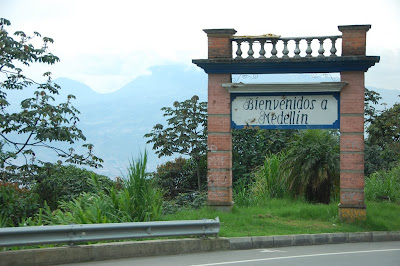
Welcome To Medellin, Colombia





305 Films presents the official "behind the scenes" coverage which was shot using the new Canon 5D Mark II and edit on Apple Final Cut Pro.
Produced By: 305 FILMS - Judd Allison / Gil Green
Behind The Scenes DP: DERICK G. PHOTOGRAPHY - Derick G.
Editor: MADLIFE ENT. - Marlon Anthony
Artist: Rick Ross and The Dream
Label: Def Jam Music
Special thanks to 305 FILMS, Judd Allison and Gil Green for shooting "All I Want" video on location in Medellin, Colombia!!
Discover The Transformation of Medellin, Colombia (click here)
Friday, May 15, 2009
Bogotá: Building a Sustainable City
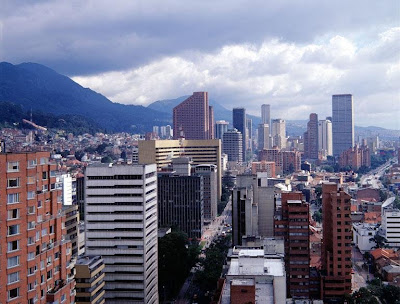
The transformaton of Bogotá, Colombia
Podcast During his tenure as mayor of Bogotá, Colombia, Enrique Peñalosa was both revered and scorned for his urban planning and transportation policies. His public works projects, which largely favored the pedestrian experience, were unlike anything previously built in Bogotá. Peñalosa describes the environmental and social importance of minimizing automobile culture.
As few as 10 years ago Bogotá, Colombia, was characterized by narco groups, senseless violence and a 30-year civil war. Every three hours someone was kidnapped. Every 15 minutes someone was killed. At one point there was not an upper- or middle-class Colombian family that did not know somebody who had been abducted.
As you move around the city today, you will see mega-libraries, greenways, 1,000 parks, over 70,000 trees and a state-of-the art transportation system called the transMilenio, which translates "transcending the millennium."
The TransMilenio is an alternative to the chaotic, independently operated bus service that dominated the city in the past. Along with this infrastructure, you'll see people from all walks of life who are out of their cars and enjoying the city: parents strolling with kids, co-workers eating lunch outside, neighbors meeting and talking with one another.
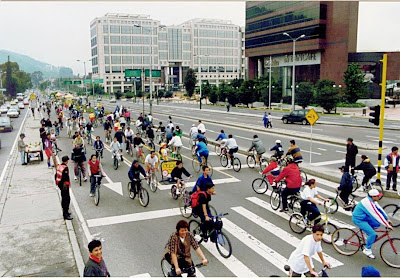
Cyclovia en Bogota, Colombia
How did this remarkable transition happen to Bogotá? It came out of the vision that Enrique Peñalosa, Bogotá's mayor from 1997 through 2000, had for his city. He wanted to reverse the decades-long norm of poverty, drug cartels and violence, and make citizens proud of the metropolis in which they lived. Peñalosa believed that cities should encourage walking and biking, which would in turn promote community and make the streets safer for children. With these ideas in mind he reformed public transportation, added greenways, built mega-libraries and created the longest stretch of bike-only lanes in the world. Peñalosa's commitment to reducing automobile usage even led to a program called the "pico y placa" ("peak times and license plates"), which greatly restricts the use of private automobiles at peak times.
The documentary highlights the story of how one man's vision transformed one of the most chaotic cities in the world into a shining model of urban planning, community development and public transportation. Although by Peñalosa's own admission there is more work to be done, the transformation thus far is remarkable and has been lauded as an example for the world to follow.
A great documentary on the transformation of the capital of Colombia, Bogotá
Bogotá: Building a Sustainable City (Part 2)
Bogotá: Building a Sustainable City (Part 3)
FREE Addmission To Museums in Medellin: Saturday May 16, 2009

Museo Castillo in Medellin, Colombia
This 1930’s Gothic-inspired Castle whose beautiful French style gardens consists of sweeping lawns and magnificent flower beds, was once home to a powerful Medellin family. The patriarch, Diego R. Echavarria, travelled the world amassing a great collection of art, along with an interesting array of home furnishing to decorate the home, all which are now on display at Castillo Museo to all visitors alike. The home was donated to the state of Antioquia by the Echavarria family after Diego's death, who wanted not just to preserve the home, but offer the public an opportunity to view his vast collection of art and antiques.
I would love to tell you the whole story behind the family’s tragic end, but feel it’s better for visitors to learn about the history during a visit to Castillo Museo.
TIP: An English tour guide is highly recommended, since the Castillo Tour Guides do not speak English. It’s definitely worth a visit.
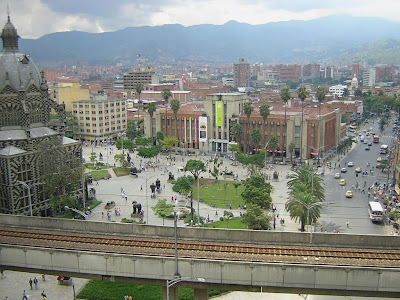
Museo de Antioquia in Plaza Botero.
The wonderful city of Medellin is celebrating "International Day of Museums" where addmssion will be free at 21 museums throughout the city on Saturday, 16 of May.
The following list of museums are those participating in free addmision this Saturday in Medellin.
• Museo de Antioquia.
• Fundación Casa Museo Maestro Pedro Nel Gómez.
• Museo de Arte Moderno de Medellín MAMM.
• Museo Universitario Universidad de Antioquia MUUA.
• Museo Interactivo EPM.
• Museo Temático del Planetario.
• Colección Filatélica Banco de la República.
• Museo El Castillo.
• Museo Cementerio de San Pedro.
• Museo Etnográfico Miguel Ángel Builes.
• Casa Museo y Zoológico Santa Fe.
• Museo Etnográfico Madre Laura.
• Museo Entomológico y Mariposario Piedras Blancas.
• Casa Museo Gardeliana.
• Sala Museo Rafael Uribe Uribe.
• Parque Explora.
• Museo Herbario Gabriel Gutiérrez V.
• Museo de Entomología Francisco Luís Gallego. U. N.
• Casa Museo Otraparte.
• Museo Arqueológico del Municipio de Envigado.
• Casa Natal de Marco Fidel Suárez. Bello.
Discover The Transformation of Medellin, Colombia (click here)
Thursday, May 14, 2009
Colombian Author Evelio Rosero Awarded Independent Foreign Fiction Prize
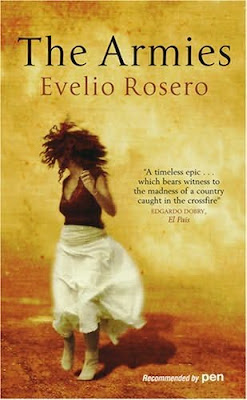
"The Armies" by Colombian author Evelio Rosero
A brutal but beautiful novel about life in Colombia in the midst of the civil war which has ravaged the country for decades has won the Independent foreign fiction prize.
Evelio Rosero, a prize-winning author in his own country but hardly known outside it, this evening became the first Colombian author to win the prize, picking it up for a book which judges praised as "a beautifully wrought, gently spoken novel of love, war and grief". The Armies is set in a village in the remote mountains of Colombia, following the story of a retired schoolteacher whose wife disappears; as more people go missing and war approaches, the other villagers make their escape, but Ismael stays behind, becoming a reluctant witness to the violence that is sweeping his country.
"It's a stunning novel of the Colombian conflict – it's so beautifully told, it reads like a classic," said its translator Anne McLean. "Most of the events – the shock horror events in the novel – are taken from news stories. It's not a comfortable read, but it is a page-turner and he somehow makes it universal even though it's so Colombian."
Rosero, who speaks no English, said winning the prize had persuaded him to keep on writing. "This recognition comes as very welcome and timely news as I find myself halfway through a novel that I've been tackling for several months now," he said in a translated statement. "At the stage when one doesn't know whether to keep writing or run away, the Independent foreign fiction prize has encouraged me to opt for the former."
He also thanked McLean, an "unsurpassable translator of Spanish-speaking writers", for "the beautiful English she made out of my anguish and love for my country".

Evelio Rosero, Colombian author
Chair of judges Boyd Tonkin, literary editor of the Independent, said The Armies "not only laments the Colombian people's tragedy but celebrates the universal but always fragile virtues of everyday life and speaks of terrible events with a precision and humanity that earn the reader's affection as well as respect". McLean's translation, meanwhile, "captures every shade and nuance of this story in words that match gravity and grace".
Winning the prize for a second time – McLean first picked it up in 2004 for her translation of Soldiers of Salamis by Javier Cercas – was "unbelievable", the translator said. "I was so shocked that both my books made the shortlist, so to have actually won is really flabbergasting."
McLean, who also translated the shortlisted The Informers by another Colombian writer, Juan Gabriel Vásquez, said there was "a lot of good fiction coming out of Colombia". "It seems to be a good time for Colombian fiction," she said. "Evelio Rosero has won all the major prizes in Colombia but this is only his second novel to be published in Spain, where he's been a revelation – everyone's saying 'who is this guy?'"
Antonia Byatt, literature director at the Arts Council, which runs the award in association with the Independent, said the choice of The Armies as winner illustrated the importance of fiction in translation. "Who would want to miss such a poignant and powerful book? A book that not only tells us about how life is torn apart in a country wrought be war, but also adds to our understanding of the human condition," she said. "I am delighted more novels in translation than ever were entered for the prize this year, proof that we are waking up to the hugely rich quality of fiction written in other languages."
"The Armies" available on Amazon.co.uk
Wednesday, May 13, 2009
Colombia Adventure Tourism

Cartagena, Colombia
Colombian Tourism addresses the issue straight away: "Colombia ... the only risk is wanting to stay". I admire the upfront approach to the country's dodgy reputation but, as I'm surrounded by men holding guns, I'm not entirely sold on the slogan.
Luckily, the military aren't after me today. Instead, they are here to protect my group as we hike through jungle once occupied by the paramilitary. Bored, they are just happy to have new faces to play a game of cards with.
Rifles propped against tables, introductions made, we use our best Spanglish and get down to it. If I were anywhere else, I'd find it a little odd to finish my day playing the children's card game "Uno" with the military. But in Colombia, I've come to accept anything can happen.
Not so long ago, Colombia was one of the world's travelling black holes, a lawless country torn apart by civil war. But with a new government, the country has begun to clean up its act and undergone a major tourism makeover.
While there's no doubt Colombia has a serious safety hangover, its "dangerous" reputation has actually given it street credibility among travellers. Visitor numbers are up as people look for a slice of South America that is edgier, cheaper and more off the beaten track.
Guidebooks in hand, the backpackers are the first to return and they've done it with a touch of old-world style, sailing from Panama to Colombia via the San Blas Islands. The five-day journey avoids the Darien Gap, the extremely dangerous overland route through the lawless terrain between Panama and Colombia, and sails straight into the heart of one of Colombia's tourism hotspots, the Caribbean port of Cartagena.
Cartagena was given UNESCO World Heritage status in 1984 and it's easy to get lost in the jumble of cobbled streets inside the 400-year-old fortress.
Pastel-coloured mansions perch proudly along the avenues, their windows overflowing with summer blossoms. Horse-drawn carriages whip around carrying cashed-up tourists and the plazas are filled with shady, umbrella-strewn cafes and even shadier characters.
Cartagena was once a hive of villainy where pirates laid siege, thieves traded in stolen gold and smugglers ruled the docks. But all this adds to the city's swashbuckling appeal.
The streets burst with energy and I half expect Jack Sparrow to stumble around the corner brandishing a flagon of liquor.
Hot on the heels of the backpackers, cruise ships have arrived in Cartagena, followed closely by Europeans on package deals. The main attraction is Colombia's unspoilt coastline, increasingly punctuated by all-inclusive resorts with heavy security, heaving buffets and open bars.
However, step away from the white beaches and resort towns of the Caribbean Coast and the country begins to shape-shift. There are still a number of "hot" zones where it is unsafe to travel and, while conditions have become more stabilised, it's important to be aware of any deteriorating conditions.
But venturing inland rewards the brave with precious spoils. One of the country's jewels is Ciudad Perdida, or the "Lost City", in Tayrona National Park. Four hours east of Cartagena, the abandoned city was discovered by treasure hunters in the 1970s. For Indiana Jones fans, the six-day return journey through unspoilt jungle to the 500-year-old ruins is nirvana. For those who don't like mud and mosquitoes, it's hell.
The terraced ruins of the Lost City are being touted as an alternative to Peru's overrun Inca Trail. While admittedly not as spectacular as Machu Picchu, what is remarkable about the Lost City is how unspoilt it is. Our group of seven were the only people there.
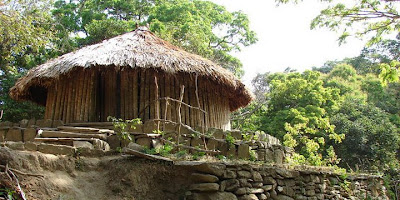
Cuidad Peridada en Colombia
There are a number of reasons for its seclusion. The first is it is only accessible by foot through inhospitable terrain. The second is that the paramilitary activity that dominated the area years ago prevented the ruins from being developed and exploited.
A quieter reason is the farms near the ruins grow coca. Colombia is responsible for about 80 per cent of the world's trade in coca and the illegal trade has played a massive role in the devastating internal conflict that has crippled the country for years.
Surprisingly, although we had signed up to see the ruins, the simple encounters with locals along the way turned out to be the highlight of the trek.
On our first night, we shared a meal with three generations of our guide's family at their farmhouse. The next night we camped with the military. On our ascent to the ruins, we passed through the villages of Kogi Indians, who have lived in the area for countless generations.

Cuidad Perdida en Colombia
While just kilometres apart, each group has led a completely different existence, showing us there is no one way of life in this country.
Heading south, the city of Medellin is a convenient halfway point between the Caribbean Coast and the capital, Bogota.

Medellin, Colombia
Once the centre of Colombia's narco trade, Medellin was considered the most dangerous city in the world, though it has been reinvented as a sophisticated cultural centre. Large sculptures by renowned artist Fernando Botero are scattered throughout the city, which is festooned with flowers in summer, and it is the perfect base for exploring the colonial towns nearby.
But its dark past still lingers. Much to the chagrin of tourist officials, one of the most popular tours revolves around Pablo Escobar, one of the world's most notorious kingpin.
His shrine-like grave is strewn with flowers (ironically, he began his career stealing tombstones), while tours also visit the crumbling ruins of his custom-built luxury prison, La Catedral, and the abandoned house where he was shot after a 499-day manhunt.
Perhaps Escobar would have benefited from a visit to Miguel Caballero, a Bogota-based tailor who specialises in bulletproof clothing. His inclusion in the Lonely Planet guide has given him cult status among the travel set. Rumours abound that US President Barack Obama wears his collection, while legend has it he shoots his employees and there's ample proof on video website YouTube that he'll shoot international journalists on request. However, he does not shoot tourists for fun, despite guidebook-toting backpackers dropping past his small shop every few hours to ask.
The heart of Bogota is La Candelaria, the 470-year-old historic quarter, where narrow cobbled streets give way to a collection of century-old churches and the magnificent Plaza de Bolivar.
Although a number of excellent museums surround the old quarter, Bogota is hard to warm to. Even the statues of saints perched on top of the mountain ranges that rim the city designed to offer hope to the slums appear like an army of cranky archangels ready to swoop down on the anarchy below.
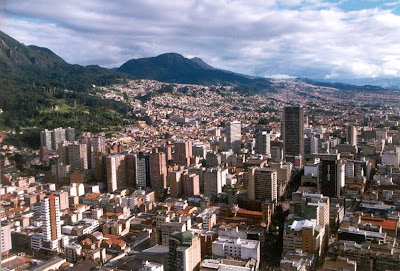
Bogota, Colombia
Salvation is on hand just an hour away at Zipaquira, a small mountainside town surrounded by dairy farms, where you can acquaint yourself with Colombia's other white powder: salt.
Here, an old refuge in a salt mine has been transformed by more than 100 sculptors into a stunning underground cathedral. The descent is haunting, with illuminated carvings representing the Stations of the Cross lighting the way. Gothic angels sculpted from pillars of salt line the walls while eerie optical illusions have been created with careful lighting throughout the caverns.
Sitting in this cathedral 100 metres below the surface, I'm able to see another dimension to Colombia, one strongly influenced by hope. Perhaps it is the country's unwavering sense of faith that has unified the population and helped them to survive such brutal times.
Colombia is a beautiful country with broad appeal but its colourful past will form an integral part of its tourism industry in the near future.
For travellers, Colombia's call is irresistible, a place with so much terror and so much beauty, a thin veneer of improved safety and a healthy dose of the unknown. And for me, the risk isn't wanting to stay. The temptation lies in wanting to go back for more.
We invite all visitors to discover the magic that is Colombia.
Sunday, May 10, 2009
Happy Mother's Day From Colombia

Mystery Solved: Why Moms Really Love Flowers on Special Day
For over a hundred years, mothers in the United States have been honored on Mother's Day, traditionally celebrated with beautiful bouquets of flowers. New research suggests that the positive power flowers have on feelings may be the real reason mothers prefer to be given beautiful blooms on their special day. According to a behavioral research study conducted by Nancy Etcoff, Ph.D., of Massachusetts General Hospital and Harvard Medical School, when fresh-cut flowers are in the home, people feel more compassionate toward others, have less worry and anxiety and feel less depressed.
"Without question, mothers appreciate flowers for their natural beauty," said Augusto Solano, president of Asocolflores, the Colombian Association of Flower Exporters. "And beyond the emotional excitement of receiving flowers, there are proven benefits that flowers provide on human behavior. Moms have long recognized the power of flowers, and now we know why! For over-stressed moms, it's no wonder they look to flowers for a proven pick-me-up."
Solano suggests treating moms to flowers not only on Mother's Day, but throughout the year. Flowers are not only great to look at, but have powerful "attitude-adjusting" qualities that can be enjoyed by busy moms, too.
Just in time for Mother's Day, millions of flowers will be shipped to the U.S. from Colombia, The Land of Flowers. Two out of every three flowers sold in the U.S. are grown in Colombia's rich, fertile soil and the country's beautiful year-round climate.
And a majority of those fresh cut red roses come from Medellin, Colombia the "city of eternal spring."
The first person I called from my hotel room on my first trip to Medellin was my mother, which I called to not only tell her I was safe because she worried about me traveling to Colombia, but I wanted to tell her that everything she had heard about Medellin in the US news was all in the past.
Discover The Transformation of Medellin, Colombia (click here)
Saturday, May 9, 2009
Fonseca Honors The Great Vallenato Singers

Juan Fernando Fonseca, Colombia's red hot singer-songwriter
What a coincidence. The biggest and best music stars from Colombia go by one name: the pop-rock icons Juanes and Shakira, salsa legend Fruko and now, the rising star known as Fonseca.
Since he burst on the international Latin music scene with his critically acclaimed hit disc "Corazon," Juan Fernando Fonseca has been an artist to watch.
"Corazon" (2005) became the biggest-selling disc in Colombia that year, outpacing Shakira's "Fijacion Oral, Vol. 1"/"Oral Fixation, Vol. 2." It also racked up several awards, including a Latin Grammy for best tropical Latin song. His followup disc, "Gratitud" (2008), just won three Premios Nuestra Tierra (a Colombian music award). And six of the eight stops on his current U.S. tour, dubbed "Gratitour 2009," have sold out.

Juanes, native son of Medellin, Colombia rocks the stage.
Perhaps most important, building on the work of Shakira, Juanes and others, Fonseca has helped to spur a movement rooted in the traditional folk music of Colombia.
"Shakira and Juanes have been so kind and encouraging to me," said Fonseca, who performs tonight in Chicago. "They have helped to open many doors. About 15 years ago, musicians began looking inside to the typical folk styles of our homeland. We started fusing our roots with the electric guitar, and it gave our music a special sound. Juanes built his style around guasca [a kind of folk music from the northwest state of Antioquia]. I've tried to do the same with vallenato."
A distinctive accordion-driven style, vallenato developed along the Caribbean coast. It has undergone a revival, thanks to Colombian pop-rock star Carlos Vives, whose landmark disc "Clasicos de la Provincia" (1994) paid tribute to the great vallenato songs of the last century. Fonseca regards Vives as a mentor. "I am a student of his, and I really love his music."
When he discovered "Clasicos de la Provincia," "it blew my mind," said Fonseca, 29, who grew up listening to American rock (Metallica and Guns 'N Roses) and British pop (George Michael). "This was the first time I heard vallenato and realized it is not just old-time music of my grandparents' era, but it is music closer to my generation."

Shakira, the queen of Colombia.
In between his U.S. tour dates, Fonseca returned to Colombia in late April for the 42nd annual Festival de la Leyenda Vallenata in the city of Valledupar, the Ground Zero of vallenato. "This was the third time I was invited to participate," he said. "It's an honor to be at the center of vallenato music. They like what I do, and I admire them so much."
Even so, Fonseca admits he's often asked "why a guy from Bogota" -- Colombia's most cosmopolitan city -- "sings vallenato. Of course I am not a pure vallenato artist," he said. "I take some things and add others. Especially all the music I grew up with. I try to experience every kind of music I love."
That's evident on "Gratitud," which further develops the jazz-pop vibe heard on "Corazon." "This time I wanted to explore these three roads: vallenato, pop and jazz," he said. "I wanted to take more liberty to do completely different things within one album."
He also sings in English on "Gratitud." "When I was writing 'Beautiful Sunshine,' I realized that it would work better in English," said Fonseca, who studied in Boston at the prestigious Berklee School of Music. "On 'Catalina,' when I switch to English, it was like I was joking in that part. I like to mix up English and Spanish."
For "Gratitud," Fonseca wrote or co-wrote all but two songs. He discovered one of the covers, "Perdon" by an unknown Colombian composer named Alejandro Bassi, by chance. "I was a friend's house, and I put an iPod on shuffle, and this song turned up," he said. "I really liked it, so I decided to record it."
Later, Bassi showed his "Gratitude" by making a YouTube video in which he thanks Fonseca for recording his song. "It's a great story," Fonseca said, laughing.
Meanwhile, Fonseca will soon reach another milestone. He turns 30 on May 29. "I feel grateful for everything I've achieved so far," he said. "Every year that you can have another birthday, it's a happy day. I want to keep on singing and writing like the artists I admire. Bands like Radiohead. Or Cafe Tacuba. And Juan Luis Guerra, I've been a fan of his since I was 7 years old. He's such a great guy, he's been so many places and had so many experiences. And yet he is so down to earth. I'd like to turn out like that."
BY LAURA EMERICK lemerick@suntimes.com
Discover The Transformation of Medellin, Colombia (click here)
Thursday, May 7, 2009
Rick Ross "All I Really Want" in Medellin
Rick Ross shot his lastest video "All I Really Want" in Medellin.
Sunday, May 3, 2009
"The Expedition Condor" Travel Adventures Throughout Colombia

“The Expedition Condor” tours in Colombia was developed with a wide variety of adventures sports activities along with a cultural integration to learn about the towns they visit on the tours. This is the first program of its kind in Colombia.

The Expedition Condor successful, “Colombia Is All An Adventure” expedition covered more than 10,000 km and 50 municipalities throughout Colombia.
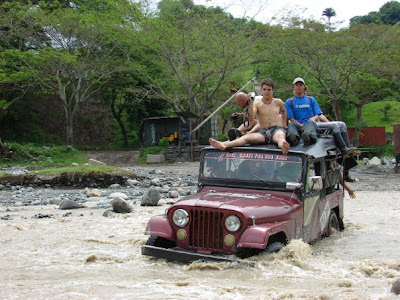
This expedition gave the many participants the opportunity to face many exciting challenges along their travel adventures which included climbing mountains, whitewater rafting, paragliding, hiking, exploring caves in the emerald mines in Muzo Boyacá, and even a ride overlooking the beautify countryside on a helium balloon.

The primary goal of the “The Expedition Condor” tours is to promote Colombia as a tourist destination for adventures travelers looking to explore the culture, history, routes, and most importantly, its people.
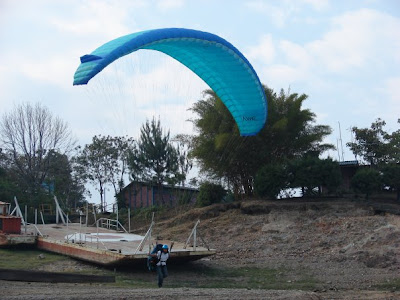
At the present time “The Expedition Condor” is developing the program for the next travel adventures through Colombia which the group plans on visiting the departments of Guajira, Bolivar, North of Santander, Sucre, Amazon, Nariño, Huila, the Cauca, Goal, in addition it will again travel through Antioch, Cundinamarca, Casanare, Magdalena, Santander, Valley, Quindío, Tolima and Boyacá as they search new extreme adventures in to promote Colombia at national and international level.

La Expedición Cóndor de los Andes es un proyecto de carácter deportivo y de integración cultural, sin precedentes en la historia de nuestro país. Esta travesía recorrió en la primera etapa de su Fase Uno, “Colombia Toda Una Aventura” más de 10.000 kms y 50 municipios del territorio nacional.
Dicha aventura que inició el 18 de febrero de 2007, dio al grupo de la expedición la oportunidad de enfrentar entre sus retos, altas montañas, ríos caudalosos y hasta las profundidades de la tierra en las minas de esmeraldas en Muzo Boyacá.
Su objetivo principal es mostrar a Colombia como un destino turístico de aventura, ideal para la practica de deportes extremos, el cual además por características como su flora, su fauna, sus paisajes y lo mas importante su gente, posee un gran potencial y proyección a nivel internacional.
En estos momentos se realiza la pre-producción de la segunda etapa de aproximadamente 3 meses. En dicha etapa el grupo de expedicionarios tiene proyectado visitar los departamentos de Guajira, Bolívar, Norte de Santander, Sucre, Amazonas, Nariño, Huila, Cauca, Meta, además recorrerá nuevamente Antioquia, Cundinamarca, Casanare, Magdalena, Santander, Valle, Quindío, Tolima y Boyacá en busca de esa Colombia
For more information: Travel Adventures in Colombia
Friday, May 1, 2009
Colombia's First Environmental Film Festival

The festival "Cine Ambiental VOCES" is the first environmental film screening series to be held in Colombia. The festival is the work of Pablo Velez Tobar. Tobar grew up in Colombia and studied environmental engineering at the University of Medellín. He then moved to Toronto to study environmental protection technologies. After graduating in May of 2008, Pablo began planning the festival.
Greatly concerned over the environmental future of his home country, Pablo decided to plan a film screening series in order to raise awareness. As Colombia modernizes and gains stability, Pablo is concerned the natural resources will be exploited. Pablo sees "the festival VOCES supporting a generation of green technologies and green projects for years to come."
Pablo is also greatly concerned over the inequality he sees in Colombia. Environmental issues such as clean water, clean air, polluted soil, etc, adds to the struggles the underprivileged face. Pablo hopes the festival can have a direct impact on these issues.
Pablo began screening films in early March in the city of Medellín. He screened the films at cultural centers, universities, schools, and in the surrounding barrios (neighborhoods). Pablo screened a mix of documentary, experimental and narrative, changing up the program to fit the various audiences.
After the initial screenings, the festival entered the "mobile" phase. Pablo began screening the films in various small towns throughout the Antioquia region of Colombia.
One of the small towns Pablo visited was Santa Rosa de Osos, a farming community 2 hours outside Medellín. Pablo spent three days in Santa Rosa screening films and hosting discussions with school children. He also screened a selection of films for the local government, including the mayor.
Pablo originally had 30 screenings set up, but continues adding more. Currently there has been over 43 screenings. The festival wraps up with a few final screenings at the University of Antioquia. Pablo estimates the festival will reach close to 2,500 people.
Pablo hopes to continue the festival for years to come. His goal for this year was to "reach as many people as possible and from different ages, economical situation, gender, education, interest and basically leave a reflection on the environment that surrounds them." In future years Pablo hopes to turn the festival into a "festival with action." He plans to develop a series of sustainable projects to introduce to the communities where he screens the films.
Universidad de Medellín
El I Festival de Cine Ambiental VOCES ha sido concebido por un grupo independiente e interdisciplinario de personas que pretenden propiciar la reflexión, desde una perspectiva ambientalista, a través de imágenes y medios audiovisuales.
Desde el Festival VOCES consideramos que al resignificar la estrecha relación que existe entre la especie humana y su entorno, en sus dimensiones natural y artificial, basados en el respeto por el otro y lo otro, es posible alcanzar una vida con dignidad, equidad y responsabilidad, facilitando así el bienestar de la sociedad en su conjunto.
El Festival VOCES pretende abrir un espacio en donde el público logre expresar sus pensamientos e inquietudes sobre las problemáticas sociales y medioambientales que enfrentan en su contexto local, acercando a diferentes públicos a trabajos audiovisuales independientes.
festicineambientalvoces.blogspot.com/
Subscribe to:
Posts (Atom)





















